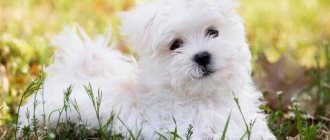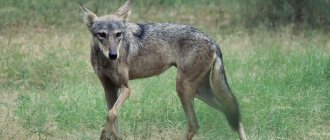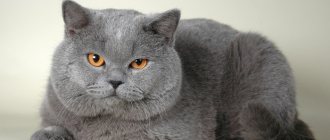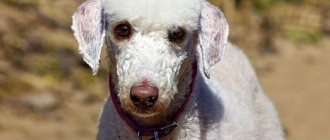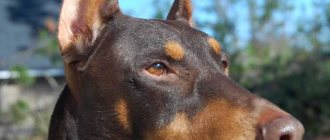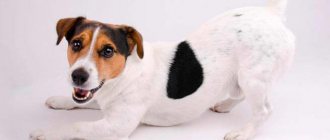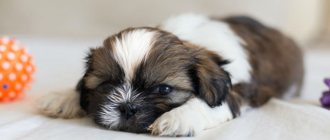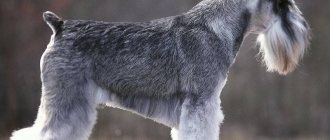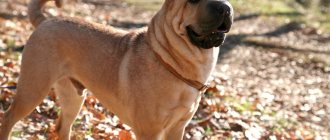Origin history and interesting facts
The white miniature schnauzer was bred in Germany in the 19th century. The breeds of dogs involved in the selection were: miniature pinscher, miniature schnauzer, affenpinscher and small dogs of the spitz and poodle type. The newly bred breed was intended for local farmers who were plagued by rat infestations. In addition to the makings of a hunter, the dog had excellent watchdog qualities, had a good-natured character, and was a good home companion.
Miniature Schnauzer Apriori Chick Baby Doll
Initially, the Miniature Schnauzer had many colors and shades. During World War II, the breed was practically destroyed. Now dogs are bred with black, white, ash, pepper and salt, black and silver hair.
These different miniature schnauzers
FCI standard
Table 1. Miniature Schnauzer: breed standard
| Parameter | Description |
| Head | Oval, slightly extended forward. The forehead is not protruding, there are no wrinkles |
| Eyes | Small, oval-shaped, dark in color, do not mow. Tight eyelids |
| Ears | Soft. According to the standard, they are docked and stand in a triangle |
| Neck | Powerful, not elongated |
| Breast | Medium width, oval. It bends at the bottom |
| Front legs | Straight, have a small distance between each other. The collarbone is straight on all sides. The shoulder blade is oblique and moves back. The shoulder is athletic. The angle of contact with the blade is 95/105 degrees. |
| Hind legs | When viewed from the side, they are mowed, from behind - they are not narrowly located, synchronous. The thigh is wide and of medium length. The knee is not twisted and does not go inward. The position of the limbs is “at the start”. The lower leg is powerful and strong |
| Wool | Wire-like, dense, similar undercoat |
| Color | Black/dark gray with tan/white/black with silver marks. Let's say ash and silver with off-white. A dark mask is required in all colors |
| Weight | Around 6 kg |
| Height | Does not exceed 35 cm |
A dark mask is mandatory for every Miniature Schnauzer.
Culling
Any deviation from the following points shall indicate a deficiency. Among the special ones are:
- The head is oval shaped;
- The presence of folds in the forehead area;
- Sharp muzzle, shortened;
- Straight bite;
- Extending cheek bones;
- Ears that are not parallel;
- Light, large/small eyes;
- Suspender/folds in the throat area;
- Back with a hump;
- The upper part of the neck is narrow;
- Beveled back;
- Tail like a hare's;
- Excessively long limbs;
- Soft wool with curls;
- Chocolate-colored undercoat;
- Black saddle;
- Color “black and silver” - the markings on the chest are not separated;
- The height at the withers deviates from the norm by more than 10 mm.
Severe defects include short legs and loose build. Also considered a defect is a “bitch in male type”, twisted elbows or hind legs. An elongated shin and short metatarsals are also the basis for such a mark.
Important! If the height at the withers exceeds 20 mm above normal, this is considered a significant deviation.
Cowardice and suspicion are considered vices on a par with flaws in appearance
Disqualifying defects include deformities of any kind, lack of breed, improper bite and anything related to the jaw. They also look at cowardice, aggression, and malice. Attention is drawn to the dog's irritability and excessive suspicion.
Description of the breed, miniature schnauzer standards
Miniature Schnauzer: description of the breed, character, features
The physique of the white miniature schnauzer has the same proportions as all schnauzers; the height at the withers corresponds to the length of the body. Miniature Schnauzer description according to the RKF standard:
- height at withers – up to 35 cm;
- weight – up to 8 kg;
- the muzzle is square, like a blunt wedge, with a mustache and beard;
- ears – hanging, cropped;
- tail – docked;
- The coat is hard, long with a thick undercoat.
- color – black, black with silver, white, ash, pepper and salt, silver-gray.
The most common is the black miniature schnauzer. Initially, farmers trimmed the ears and tails of their pets for their safety against rodents. Nowadays this is done simply to improve the dog's appearance. A special feature of the Miniature Schnauzer and its advantage is its mustache and beard, which require constant care from the owner.
Puberty in miniature schnauzer males begins at 6-10 months. At this time, sex hormones begin to be produced, but spermatozoa still have low activity and the male is not suitable for fertilization. Only by the age of one and a half to two years is he ready to become a dad.
Female miniature schnauzers can begin estrus as early as 10 months, but the dog at this time is not yet ready to bear offspring; its internal organs are not yet fully formed. She is not psychologically ready for such an important process. The best time to start breeding is 1.5-2 years.
Miniature Schnauzer breed standard
Characteristics of the miniature schnauzer dog breed
Males and females:
Price:
Life expectancy: from 13 to 15 years. |
Is it difficult to care for a Miniature Schnauzer? | Care is simple, but the coat requires special attention. |
Are Miniature Schnauzer and Miniature Schnauzer the same breed? | No. They differ in size. The Miniature Schnauzer is a mini copy of the Giant and Miniature Schnauzer. |
Where is it better to keep: in a city apartment or in the countryside? | The house is more comfortable, but the apartment suits him too. For city conditions, the miniature is ideal. |
Is it possible to keep an aviary? | No, he will not survive the cold winter outside. And he will be lonely in the enclosure. This is an exclusively indoor animal. |
How often should I bathe? | It is recommended to wash the decorating coat with a special product once a week. Full baths should only be given when necessary. |
How does shedding occur? | The dog does not shed on its own; it is trimmed. |
Is grooming necessary? | Yes, the fur coat is periodically combed and trimmed (to shape the eyebrows and genital area), and in spring and autumn trimming (plucking) is necessary. |
Can a haircut replace trimming? | Partial cutting of the hair does not remove dead hair. Lack of trimming leads to negative changes in the coat. This is especially true for pepper-and-salt pets. |
How long are the walks? | About 1.5–2 hours a day. |
Are there any difficulties with socialization? | There are no difficulties if the dog begins to be taken outside early - at 2.5 months (having endured quarantine after the first vaccination). |
How often do owners encounter stubbornness? | Behavior problems are discovered only with improper upbringing. The pupil always adapts to the character and desires of the owner. |
What kind of work can it do? | Used for catching rats, hunting, protection. Suitable for agility, obedience, flyball. |
Who is not suitable for a miniature schnauzer? | Sedentary people who prefer peace and quiet. |
Is it suitable for a child? | Dogs with a terrier temperament are excellent companions; they love children and allow them little pranks. |
Is it suitable for security? | This is a sensitive and brave watchman and security guard. |
Is it true that this is the most hypoallergenic breed among schnauzers? | The assertion is baseless. The dog does not shed, but the cause of allergic reactions is often associated not only with hairs, but also with other secretions. |
Do you need clothes? | In sub-zero temperatures, especially after trimming, overalls are required. |
Is keeping with other animals acceptable? | With good socialization, they are friendly towards animals of medium and large sizes, but can attack birds and small rodents. |
Advantages of the breed
- Miniatures are small dogs. This is one of the most popular breeds for the city.
- They are easily recognizable and have a striking appearance.
- They will become loyal and cheerful companions and playmates.
- They do not shed and therefore do not have an unpleasant odor.
- They are distinguished by an active life position and positivity.
- Shows all the qualities of a watchdog.
- Adapt to life in different conditions.
- Caring for them is simple, but you will have to tinker with the wool.
- They are easy to train and smart.
Flaws
- The wool has to be trimmed regularly. The procedure requires some skills. You can learn how to do it yourself, but show animals will need the services of a master.
- If mistakes are made in breeding, puppies may show excessive shyness and timidity.
- Without firm and consistent, and sometimes authoritarian, upbringing, a baby can transform into a hysterical dog with a bad character.
- The Mini Schnauzer is characterized by excessive barking.
- Submits only to those who are stronger, smarter and more cunning than him. The owner must become an authority.
- It looks like a lap dog, but is demanding exercise and needs daily walks outside.
- Has a tendency to dig holes.
- Predisposed to cancer, allergies, diabetes and eye diseases.
Character and intelligence
Estonian Hound: description of the breed, character
The description of the miniature schnauzer dog breed indicates that it is a very sociable pet and treats all members of the owner’s family with love. The baby will cuddle up to everyone and play with pleasure. He doesn't like to be alone for a long time.
Important! Miniature Schnauzers suffer greatly when left alone. The owner should know this and not leave his pet alone for a long time.
The Miniature Schnauzer is a fairly intelligent but stubborn dog. She learns easily, provided that an approach is found to her. Forcing her to do something under the influence of force is wrong. This can break a dog, turning a cheerful and playful dog into a withdrawn and fearful one.
A dog with character
Character of the miniature schnauzer
A child reads a book to a miniature schnauzer.
A descendant of the schnauzer, the miniature schnauzer inherited from him all the main features of the breed. “Little big dog” is how the Miniature Schnauzer is often characterized, meaning the dog’s miniature nature coupled with its serious disposition and excellent physical qualities. This dog has a stable nervous system, a lightning-fast reaction, he is vigilant and distrustful of strangers, ready at any moment to demonstrate to a stranger that he is not to be trifled with.
The guard qualities of the miniature schnauzer appear from puppyhood. The courage and dedication of an adult dog knows no bounds, and she copes perfectly with the role of protector of the home and her owners. A trained dog always acts according to plan: first he warns the attacker with a menacing growl and a deafening bark, and if this does not work, he will probably leave his own trademark on the enemy’s calf - an impressive bite mark.
Zverg is a born hunter, a terror for rats, mice, moles, and weasels. He treats representatives of the cat tribe with suspicion. While a miniature cat can be trained to be somewhat friendly towards a cat living in the same house, a stranger cat may not be so happy.
The personality of the Miniature Schnauzer lies in the contrasts of its behavior. He often puts on a decorous and respectable appearance, but at any moment he can transform into the most cheerful dog in the world. He is cunning, resourceful and cunning - he inherited these character traits from his forefathers, about whom they say: “When cunning was heard, the first in line was the schnauzer.” At the same time, he is kind-hearted and touchingly devoted to all family members - young and old.
Attitude towards children and others
Schipperke (dog): description of the breed, character
The Miniature Schnauzer treats everyone without exception with kindness and love. Possessing high intelligence, he subtly senses the mood of all family members and strives to defuse the situation in the house with his participation. Of course, he won’t be able to be a nanny for children, but he will gladly take part in games with both adults and children, sticking his curious nose in everywhere, trying to take part in all the affairs of the family.
Note! Don't rely on this little dog's cute appearance. Her teeth are not inferior in size to the teeth of a shepherd dog. In case of danger threatening the owner or members of his family, the miniature schnauzer will not miss the opportunity to use them.
Character
Miniature Schnauzers are loyal to their owner and affectionate. An excellent choice if you need a companion or a family pet. Suitable for people with experience in keeping similar breeds. For inexperienced people, it will also not be difficult to keep a miniature dog at home. They are friendly and love to communicate. They are located towards barking, so they will be effective guards. They differ in intelligence. Easily trained, obedient. They strive to please the owner, but there are situations when the miniature shows stubbornness and willfulness.
Miniatures are very social animals that need feedback.
Pets of this breed give love and attention. They themselves also need it. Therefore, the schnauzer should live in a family where a lot of time will be spent on it. They are active and energetic. They love exercise, games and participating in family activities.
Timely introduction of miniatures to canine and human society will develop good character traits in them
Miniature Schnauzers communicate well with puppies; they treat other breeds and animals without malice, especially if they grew up in the same yard. Strangers make the miniature friend friendly or timid, depending on the situation. Like other breeds, the Schnauzer needs to be socialized at an early age. This will help build confidence and develop acceptable relationships with other animals and people.
Security and guard qualities
The Miniature Schnauzer has sensitive hearing and a keen sense of smell, and is also easy to train. It is used with pleasure by the police and customs officers to detect drugs and explosives. In addition, the small size of the miniature schnauzer can allow it to get into places inaccessible to its larger relatives.
Looking at the Schwerznauser dog breed, you wouldn’t think that this is a service dog. However, they are included in the same group with such service dogs as Doberman, Boxer, Great Dane, and Giant Schnauzer. This is the smallest service dog, but its characteristics are in no way inferior to its larger brothers.
Origin of the Miniature Schnauzer breed
Today, the historical roots of many breeds are not fully understood, the same applies to miniature schnauzers. However, it is known for certain that they were bred on the basis of medium-sized schnauzers - mittels. The breeders had a specific goal - to preserve the appearance of the mittels as much as possible, but to reduce their size. Moreover, the new breed, unlike other dwarf varieties, should be devoid of constitutional weaknesses.
The homeland of miniatures is Germany; it was here, or more precisely, in the Swabian region, that breeding work was carried out. At the end of the 19th and beginning of the 20th centuries, there were experiments in crossing schnauzers with other breeds to improve certain qualities. According to the researchers' guesses, the work was carried out with Affenpinschers, orange spitz dogs, and poodles. The efforts were successful, and today miniature pinschers have gained popularity all over the world and even in some countries successfully perform customs service.
Training and education of the miniature
Raising a miniature terrier should begin from the moment the puppy enters the home, and the sooner the better. You should not rely on his cute face, which expresses a lack of understanding of what they want from him. Miniature Schnauzers are intelligent dogs and easily grasp everything; they are simply lazy and persistent. From 3-4 months you can start training. At this age, the baby can already remember simple commands. Training should be done in the form of a game, for example, running after moving objects and fetching them.
The owner, for his part, also needs to show persistence and perseverance. If training does not progress, it means that the dog owner made a mistake somewhere and is to blame for it. There are no dumb miniature schnauzers. Unlike other four-legged babies, the miniature is not subject to attacks of hysteria or nervous disorders. This fearless dog is always ready to help its owner in case of danger.
Training and education of a miniature schnauzer
Mental abilities and education
The Miniature Schnauzer has a good memory and is not short on intelligence. Just don’t think that every Tsverg is trained in everything from birth. The development of his mental abilities directly depends on the competence of the owner.
It is important to train a Zwerg puppy in the first months of its development. If you let the upbringing and training of a Miniature Schnauzer take its course, you can end up with an extravagant dog that knows no boundaries of what is permitted.
Miniature Schnauzers clearly understand what is possible and what is not, but possessing natural cunning, they often try to use dog tricks. They cannot be deceived, punished or raised their voices. At the subconscious level, Tsvergi feel a person’s mood and know how to rejoice, empathize and be sad along with the owner.
Enjoy raising your Miniature Schnauzer from the first minutes of his arrival in the house! This activity is akin to raising a playful but beloved child. Zverg is not stubborn, but he cannot be called a diligent student. He may suddenly become lazy or relax - this is a characteristic behavior for all schnauzers.
Love and more love, coupled with great patience, will help you work wonders and raise your Miniature Schnauzer puppy into a wonderful friend and companion.
Miniature Schnauzers love to be talked to. They are grateful listeners and remember numerous words and phrases. In addition, they extremely need early socialization and knowledge of the world around them.
Grooming
The thick and coarse coat of the Mini Schnauzer requires regular combing and trimming. Particular attention is paid to combing the mustache and beard with a metal brush. It is also necessary for hygiene purposes to shorten the hair around the eyes, ears, anus and between the toes.
They bathe the miniature schnauzer as it gets dirty, but not more than once a month with special shampoos for animals. More frequent bathing has a negative impact on the skin. Paws are washed with water or wiped with a damp cloth after each walk, mustache and beard - after each feeding.
Grooming
Care and maintenance
Caring for miniature schnauzers has a number of nuances due to their temperamental character and appearance.
You need to prepare in advance for the appearance of a miniature in the house: remove floor decor items, shoes, flower pots, and containers with household chemicals. Wiring and network cables should also be inaccessible to the dog. But given the sneakiness of puppies of this breed, their ability to sneak into the most inaccessible corners unnoticed, it is better to completely limit their “habitat” to one room for a while, reliably blocking access to other rooms. The fidget should be allowed to be in the kitchen only during feeding.
Miniature miniature babies are fed 4 times a day, puppies from 4 to 6 months are gradually transferred to three meals a day. Miniature Schnauzers over 8 months of age should preferably be fed twice a day. Many owners succumb to the manipulations of these cunning people with a “hungry” look full of despair, and feed the dogs additionally, which should not be done.
Sweets, smoked meats, and spicy dishes from the master's table should be excluded from the dog's diet.
Omnomnom
The Miniature Schnauzer's menu must include energy-intensive, nutritious foods. Among ready-made foods, choose premium or super-premium products for small active breeds. The miniature, which has an excellent appetite, will also not object to natural products, but combining them with ready-made food is not recommended.
The basis of a natural diet should be meat - chicken, beef (including offal, soft raw bones, for example, chicken necks), as well as rice and oatmeal porridge with vegetables. Every week the dog should be given boiled sea fish, low-fat fermented milk products, egg yolk, and non-exotic seasonal fruits.
Miniatures need long walks and regular jogging. They need to be walked at least three times a day in any weather. They get used to the regime, and if it is violated, they will not fail to remind the owner of responsibility, showing persistence.
From a very early age, the Miniature Schnauzer requires care for its thick and coarse coat. Despite the fact that a puppy under 4 months of age does not yet need daily brushing, it is better to accustom him to this procedure early, lightly scratching the dog’s fur with a thin comb every 2-3 days. Gradually, the miniature baby needs to be taught to wash his beard. First, after feeding, clean it with a dry cloth. When the puppy gets used to it, rinse the beard with warm water, then wipe it dry.
Washing a Miniature Schnauzer
The miniature schnauzer does not need full-fledged regular bath procedures (2-3 times a year is quite enough), but its fur on its paws, chest, beard, and intimate areas needs to be cleaned with water and a specialized shampoo at least weekly. It is convenient to wash the dog in the bathroom using a shower, placing it on a rubber mat. The optimal water temperature is 38-39 °C. After this, the dog needs to be dried and combed. The thick and tough fur of the miniature remains wet for a long time. If you have time, it is better to dry a wet dog with several towels, using them alternately. Frequently using a hair dryer for this purpose can cause your dog's skin to become too dry.
It is advisable to brush an adult dog at least twice a week. Before doing this, it is better to slightly moisten the wool with conditioner, spray or balm. Use two combs: first comb your pet with a slicker brush, then with a single-row comb with rounded teeth. Regular brushing will save you from fighting tangles, although they will still form periodically on your dog’s paws, beard and armpits.
Miniature Schnauzers need regular trimming - plucking out dead hair, which in these dogs does not fall out on its own and prevents the renewal of the coat. This procedure can only be carried out after the dog has changed teeth. The frequency of trimming is 2-3 months. It can be done manually or using special devices - a stripper and trimmer. In the area of the ears and throat, the hair should be plucked exclusively by hand, and very delicately. Trimming, which takes a long time (at least 4 hours), is an element of communication between the owner and the pet and helps strengthen the friendship between them. In cold weather, after trimming, the dog should walk in warm overalls for at least two weeks.
About once every month and a half, the miniature dog will have to undergo another procedure - a hygienic haircut. Using sharp scissors, you need to shorten the growth of the eyebrows and beard, adjusting their shape, cut off the overgrown hair between the paw pads, in the genital area and anus.
For miniature schnauzers taking part in exhibitions, a hygienic haircut will not be enough. They need to be left in the experienced and gentle hands of professional groomers, since cutting miniatures of different colors (single-color and combined) requires a separate, strictly verified approach. For the same reason, it is also better to entrust trimming to a master.
Optimal nutrition
Nutrition should be completely balanced. Twice a week - boiled fish without bones, on the other days of the week - raw meat and meat by-products. Chopped fruits and vegetables daily, boiled eggs twice a week, fermented milk products daily, cottage cheese. Once a week, it is advisable to arrange fasting days to completely cleanse the intestines.
Puppies begin to be fed five times a day, gradually reducing the number of meals to twice a day. An adult dog is fed twice a day.
Note! For miniature schnauzers, premium dry food designed for small dogs is suitable, but feeding with natural products is preferable.
What to feed?
The feeding regimen is chosen based on age. Adult dogs are given food twice a day - evening and morning feeding. Babies are fed more often. Usually the mini schnauzer leaves the kennel at 2 months of age. The breeder supplies the new owners with food that is familiar to miniature dogs. They are gradually transferred to the new diet.
Adult dog diet
Both natural products and ready-made diets are suitable. These two types of food should not be mixed together. The simplest, but not too cheap way to ensure quality nutrition is to switch to ready-made diets. You can only buy food of at least “Premium” class.
Cheap, widely advertised feeds are produced on the basis of low-quality plant materials. There is practically no meat in them. And without meat it is impossible to raise a healthy miniature animal. Porridge and vegetables are just an addition to the main diet.
If you decide to feed your pet natural food, be patient. Fried, spicy and salty foods should not be given. Products must be raw or cooked. The food from the owners' table is no good. You should also not overfeed, as this can lead to obesity. You will quickly notice how much your Miniature Schnauzer loves to eat. The diet of puppies should be different from that of an adult dog.
Puppy diet
- 2–4 months is a period of active growth. Feed is given 4 times a day. The basis of the diet is lean meat (60–150 g), cottage cheese (40–60 g), boiled egg yolk, dairy products and vegetables. Fish is given little by little (100–200 g) up to 2 times a week, replacing meat.
- 4–6 months – the period is characterized by the change of teeth and puberty. Feed 3 times a day with high-calorie and easily digestible food.
- 6–9 months – the period of active growth continues. Feed 3 times a day. The diet remains the same. The amount of meat is increased to 180 g per day.
- 9–12 months – the dog is transferred to two feedings a day. Once a week, it is useful to arrange a half-day “hunger strike” for a teenager, eliminating one feeding.
Natural vitamin supplements for pets
In addition to a set of nutrients, you need macro- and microelements and vitamins. There are ready-made complexes for miniature schnauzers. They can be replaced with natural supplements.
- Sea kale – saturates the body with iodine and microelements. Positively affects the condition of the coat and intestinal function. Recommended for those prone to constipation.
- Flaxseed – improves the quality of the coat. Once in the intestines, it has an enveloping effect. Has anti-inflammatory properties. 1 tbsp is enough. Soak seeds in warm water overnight. Give mucus and seeds along with food. The portion is divided into two doses (morning and evening).
- Brewer's and baker's yeast - contains B vitamins, amino acids and biologically active substances. Brewer's yeast gives 1 tsp. per day during meals. Baker's yeast is boiled before use to avoid fermentation in the stomach.
- Cereal sprouts (oats, wheat) are sources of vitamins, amino acids, microelements and other essential substances. You can only germinate seeds that have not been treated with chemicals. They are fed when the sprouts reach 1 mm. Before this, the seedlings are washed.
- Sulfur is a feed additive that improves the appearance of the coat. It improves immunity and helps with poisoning. In the spring and autumn, it is recommended to give it in combination with methionine. The dosage is prescribed by the veterinarian. The course of treatment or prevention lasts a month.
Walking and physical activity
A miniature schnauzer is best suited for keeping in a country house, where there is room to run freely, because it has a spring inside that must be unclenched. You can keep him in an apartment, provided he takes long walks every day, preferably twice a day. He loves to walk in any weather, winter or summer; rain is not a problem for him. But for such cases it is better to purchase a set of clothes: have a special raincoat for wet weather, and overalls for muddy weather. The white coat of a Miniature Schnauzer doesn't get dirty any more than other coats, it's just that the dirt is more noticeable on it.
The characteristics of the Miniature Schnauzer breed include not only daily walks, but also daily physical activity, without which it will lose its physical qualities and turn into a pet plush animal.
Walks in the open air
Vaccinations and susceptibility to disease
Miniature Schnauzers, like any other breed, are prone to diseases. The most common are:
- eye diseases - cataracts, glaucoma, retinal detachment;
- urolithiasis disease;
- cardiovascular diseases;
- epilepsy;
- malfunctions of the pancreas and endocrine glands;
- diabetes.
The breeder gives the first vaccinations to puppies at 8-9 weeks of age. After a month, vaccinations are repeated, and a rabies vaccination is added. Vaccinations are repeated every year.
Vaccinations
The first vaccinations are given to puppies at the age of 8-9 weeks, that is, this is done by the nursery.
The next vaccinations should be done after 3-4 weeks with the same drugs and rabies vaccine.
Then vaccination is carried out once a year.
The Miniature Schnauzer is a very healthy dog breed. But sometimes they can suffer from injuries received due to their activity, as well as from insects and worms
Health and life expectancy
Miniature Schnauzers are considered long-lived in the canine community. The average life expectancy is 14-16 years, there are individuals that live up to the age of twenty. How long miniature schnauzers live depends on many factors. The main criterion for keeping a pet should be boundless love, proper care, timely vaccination, a warm corner with a soft bed and a large number of toys so that there is no temptation to chew on anything owned, for which you will have to answer later.
Healthy dog
Character traits and psychological portrait
The Miniature Schnauzer is a true choleric person by nature. He has an energetic character and leadership traits. Miniature Schnauzers are jokingly called “pocket Risen” and there is some truth in this. Despite their small height and weight, Miniature Schnauzers are full of a sense of balanced dignity.
Serious and vigilant, courageous and reasonable, wary and attentive, sociable and loving - these are the characteristics, according to the owners, that are inherent in small Miniatures.
In the soul of the Miniature Schnauzer lives a traveler, captain and explorer. He is interested in everything that moves, moves and smells.
The appearance of the Miniature Schnauzer is deceiving. He does not need care and protection; on the contrary, he himself is ready to bravely defend his owner and his family. The miniature is small and remote and knows no fear, and its reserves of strength and energy are enough for three.
The Miniature Schnauzer is capable of performing in various roles. He can be a funny “gnome” who will frolic carefree and wag his tail. However, this cute creature can transform itself.
Sensing the approaching danger, the Miniature Schnauzer instantly turns into a ferocious beast and it doesn’t matter to him what threat faces him. It will be difficult to stop him in this case.
The Miniature Schnauzer is dependent on the owner, he cares about everything connected with him. The owner for him is sacred, inviolable, and the dog is ready to follow him to the ends of the earth. The Miniature Schnauzer is affectionate and playful with other family members, but he will unquestioningly obey only those whom he perceives as a leader .
Miniature Schnauzers do not mind playing with other representatives of the canine world, especially at a young age. Over the years, they become calmer, more reasonable and selective about the company of their own kind.
Under one roof, Miniatures will be able to get along with a dog of another breed and even with a cat if they came into the house as a puppy. Street cats for the Miniature Schnauzer can become the object of hunting, the same goes for rodents and birds.
Miniature Schnauzers are distrustful of strangers and do not make close contact. Without expressing aggression, they are in a state of alertness and vigilance.
Having sniffed a stranger, Zverg will step aside and begin to observe the development of the situation from the side.
Miniatures love swimming in open waters. Summer is their favorite time, they will run after butterflies and birds, dig the ground and catch mice, and in winter they don’t mind playing in the snow. Miniature Schnauzers love sports and show good results in agility.
Pros and cons of the breed
The advantages of a miniature schnauzer include a stable psyche, sociability, ease of maintenance, good protective qualities, curiosity, playfulness, love for his four-legged brothers, courage, positivity, ease of learning, immense devotion to the owner, lack of shedding and the specific smell of a dog.
The disadvantages include somewhat burdensome coat care. Enviable stubbornness and cunning can also be considered a disadvantage to some extent. This baby is able to manipulate the owner at his own discretion, and girls do this more sophisticatedly, and boys more straightforwardly. Many owners do not consider this a disadvantage; on the contrary, they are touched by this behavior of the baby.
These cute faces
Standard is not a sentence
Official statistics from international cynological associations declare the average life expectancy of a purebred, healthy dog living in favorable conditions to be just over twelve years. This is a generalized, conditional parameter: a lot of factors influence the increase or decrease in life expectancy: breed, hereditary genetics, level of life support, quality of care, nutrition and environment.
Breaking the mold, miniature schnauzers of twelve years of age continue to remain in the eyes of others as playful, restless naughty creatures full of strength and dynamics. Loving and caring owners of bearded-browed babies should consider the “recommendatory” middle age not as an unconditional verdict, but as a kind of beacon of guidance that builds a nutritional system, corrects the level of stress, changes the regime and criteria for keeping a doggie entering its “age”. Constant attention, sensitive care and sincere love guarantee a longer lifespan for a miniature schnauzer , contrary to average statistical indices.
Breeders' advice on choosing a puppy
Before purchasing a dog of this breed, it is worth asking about his parents, their diseases, and the health of the baby himself. Miniature Schnauzer puppies should be active, inquisitive, and not hide in corners. White puppies should have black noses, eyes and claws. When choosing a puppy, you should follow your heart. Perhaps the best puppy will be the one who is the first to approach the hand of the future owner.
Additional Information! The little schnauzer is very susceptible to eye diseases such as cataracts and retinal atrophy.
When choosing a nickname for a miniature schnauzer, you must first of all pay attention to brevity, pleasant pronunciation, and do not forget about the elite roots of the pet. For boys, for example, the nicknames Clark, Ronald, Nord, Ash, Lester, Nathan are suitable.
Girls' nicknames should be sweeter, more stylish, gentle, and express the owner's pride in his beauty. The names Greta, Aima, Dessie, Lyuta, Panta, Beloni, Zaruna, Irunga, Nellie may be suitable. Before you finally decide on a nickname, you should say it out loud several times, listen to its sound, and think about whether your pet will like it.
Choosing a miniature schnauzer puppy
Predisposition to diseases
It is possible that for some, the disadvantages of Zwerg will not seem significant, and the advantages not so significant. In order to properly recognize a Miniature Schnauzer, you need to feel it. Let's look at one of its disadvantages in more detail.
Hereditary diseases
The Miniature Schnauzer does not have excellent health. Numerous diseases are inherited and are incurable. They are not noticeable in puppyhood and can appear closer to the 2nd year of life in Zwerg.
What to watch out for:
- allergic reactions to food and medications;
- inflammation of hair follicles;
- epilepsy;
- skin tumors (malignant and benign);
- eye diseases (glaucoma, cataracts);
- diabetes;
- pancreatitis;
- sinus deficiency and pulmonary stenosis, which in turn can cause heart rhythm disturbances.
DNA testing of your Miniature Schnauzer can help determine if your puppy has a future health problem.
